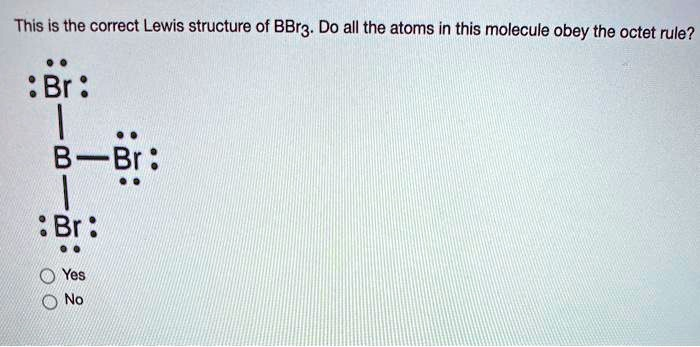This is the correct Lewis structure of BBr
. Do all the atoms in this molecule obey the octet rule

The Correct Answer and Explanation is:
No, not all atoms in BBr₃ obey the octet rule.
In the Lewis structure of boron tribromide (BBr₃), the boron atom is at the center, forming single covalent bonds with three bromine atoms. Each bromine atom completes its octet by having three lone pairs of electrons and sharing one bonding pair with boron. Bromine, being in Group 17 of the periodic table, has seven valence electrons and only needs one more to complete its octet, which it achieves through the single bond with boron.
Boron, however, presents a unique exception to the octet rule. As a Group 13 element, boron has only three valence electrons. In BBr₃, boron uses all three valence electrons to form single covalent bonds with each of the three bromine atoms. This gives boron a total of six electrons in its valence shell, two from each of the three bonding pairs. Because boron does not achieve a full complement of eight electrons, it does not obey the octet rule in this molecule.
This sub-octet configuration is not unusual for boron compounds. Boron frequently forms compounds where it has fewer than eight valence electrons, especially in neutral species. Its small atomic size and low electronegativity make it less likely to attract additional electron pairs needed to complete the octet. As such, BBr₃ is considered electron-deficient and tends to act as a Lewis acid, readily accepting a lone pair from a donor species in reactions that complete its octet.
In summary, while bromine atoms in BBr₃ satisfy the octet rule by achieving eight electrons around each atom, boron only attains six, making it an exception. Understanding this deviation helps highlight the limitations of the octet rule, especially when applied to lighter main-group elements.
